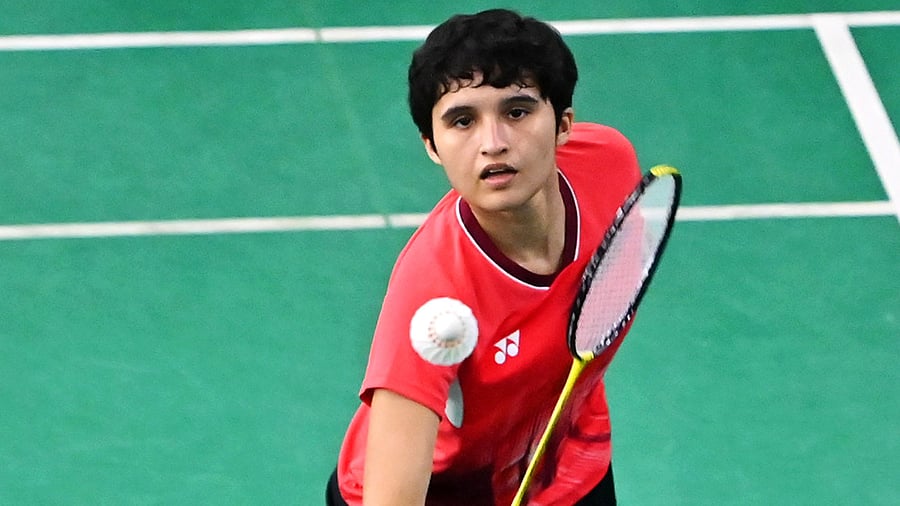
Unnati Hooda is among the 14 Indian girls in the top-100 in the world, and has what it takes to take it to the next level.
Credit: DH Photo/Pushkar V
Bengaluru: Malvika Bansod, Anupama Upadhyaya, Tasnim Mir, Anmol Kharb, Unnati Hooda, Aakarshi Kashyap, Tanvi Sharma…
These are some of the names currently ranked within the top-100 in women’s badminton singles category that is still led by two-time Olympic medallist PV Sindhu at number 15.
For more than a decade, Sindhu and Saina Nehwal (the 2012 London Olympics bronze medallist) dominated on the world stage to the Indian badminton community and beyond a reason to follow them. The two shuttlers featuring in any tournament raised hopes of them adding more silverware while forging some great battles with regular rivals on court.
If Saina showed Indians a way to break Chinese supremacy at the top, Sindhu paved her own path in becoming the tour’s toughest competitor. Their spirited brand of badminton along with an unorthodox style of play instilled fear among opponents. No more was a women’s player in Indian colours a mere participant, they were now title contenders.
Now, with Saina past her glory days and Sindhu struggling to get back to her best, an unavoidable questions crops up: ‘Who after Saina and Sindhu?’
“I remain hopeful as there are around 6-7 girls in teens who have the potential,” said Vimal Kumar, former international player and now coach.
“The most important thing for them during this junction is to be smart in planning their training and tournament schedule. What I see is that most players in this age bracket (between 15-years-old and 18-years-old) skip the domestic events and rush into challengers and BWF series events to accumulate points and make it to the top-50 in the world. Ranking alone doesn’t help, you need to be beating top-25 players regularly,” he opined.
The trickiest bit is taking a player with potential and turning them into someone a notch higher than the rest. For this to happen, right guidance plays a crucial role, according to Vimal and Arvind Bhat - former international player and two-time men’s singles national champion.
“Many people are arguing against this, but personally I feel they (Saina and Sindhu) had someone like Gopi (Pullela Gopichand) who was even more dedicated than the players themselves,” said Arvind.
“Gopi really pushed them. When someone like that can take full responsibility for a player’s growth he knows how to take them to the next level. So we’re not sure of the performance of the coaches, which includes me as well, who takes care of the top players in the country. It’s also on me, ‘can I be a coach like Gopi?’ He has set a benchmark for coaches,” offered the Bengalurean.
Both Vimal and Arvind agree that if the trajectory is not constantly on the rise, there is stagnation before the careers go on a downward spiral.
Hence, there is added responsibility on the 14 Indian girls in the top-100 in the world, and others in the future, to evolve constantly and maybe fill those big shoes.